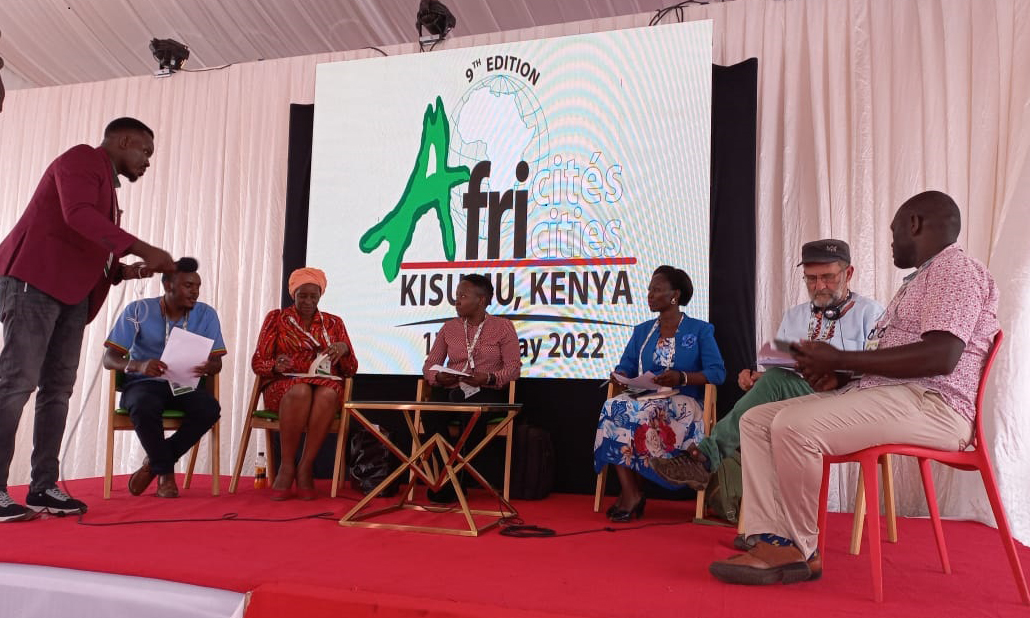Arpilleras are well-known works of Chilean popular art. During the years of the dictatorship, it wasnt just artisans that expressed themselves this way, but also political prisoners and their families. It could be said then that arpilleras are a special communication tool, through which strong feelings emmanating from very difficult and painful episodes can be expressed.
The arpilleras workshop organized by the Habitat International Coalition (HIC), with the support of the Latin American, African and Asian Social Housing Service (SELAVIP) sought to converge art and memory, thus generating a favorable space for the expression of the traumatic aspects of the disaster. The initial workshops took place over several sessions between November 2010 and February 2011 in the camps Nuevo Amanecer, Iglesia and El Molino and were coordinated by Charlotte Mathivet (HIC-GS) and the arpillera instructor Cecilia Hurtado.
The arpilleras created by participants reflect both individual perspectives on what Dichato once was, as well as what it may one day be – the wishes and hopes of a whole town. One of the participants, Carlina Jara, shared that her source of inspiration was the premonition she had shortly before February 27th. Another arpillera splits in two: on the one side there is a boat crashing into a tree during the tsunami, while on the other there is a new ship with the inscription “Nicole Esperanza”, the name of the author’s daughter.

Since the disaster wiped out the town, a process to recover Dichato’s collective memory has been underway. The arpilleras workshop contributed to the reconstruction of Dichatino memory and supported grassroots reconstruction efforts. At first, participants worked in groups to create the arpilleras to create a space for trust and cooperation, while others continued to work individually to express their deepest feelings regarding the disaster. “Memories of the tsunami and of the situation today hurt me. I preferred something happier,” says another lady who is present who illustrated the Dichato prior to the tsunami in her work.
At the end of the workshop, the audience voted for the arpillera that will appear on the cover of the book on Dichato’s memory. One of Carlina Jara’s arpilleras was chosen, one that shows boats and houses taken by the flow of water towards a giant fish that threatens all.
The second event of the day was the presentation of the advances made so far in the book of Dichato’s memory, in which the arpilleras will also be published. The book is a project led by SUR Corporación of Social Studies and Education, with the support of the Habitat International Coalition (HIC), the Chile Social Habitat Network, the Observatory for Housing and City Network, and the Institute for Housing of Universidad de Chile.
The idea for the book came in April 2010 when a group of Latin American activists traveled through the regions affected by February’s earthquake and tsunami. In conversations with Dichatinos, the history of the town came up time and again (for instance, the earthquake of 1960, the strongest reported in the world to date) and in this way it was decided to write the town’s trajectory. The main objective was to not depend on scientific sources alone, but to also include the memories of all residents. A first work session took place between the September 5th and 10th 2010 with a group of eight professionals and activists (HIC-GS among them) from Santiago and Valparaíso who carried out the fieldwork component. There were visits around Dichato with leaders, one-on-one and group interviews with different actors, and workshops that facilitated exchanges (on post-disaster situations elsewhere in the world), as well for the town’s memory where a timeline was created in the camp of El Molino.
The most recent workshop started with the recollection that several of those present had of Dichato. For instance, one resident remembered the end of the train in Dichato between 1983 and 1985, which led to the arrival of the bus companies. Another participant shared stories from her childhood in Dichato in the 1930s and 1940s: “Dichato was beautiful with its nature, landscape, and the river”.
In order to structure the book, a collective history of the town ranging from the 16th century to 2010 was presented so that Dichatinos would have the opportunity to fill the gaps with their own memories or historical knowledge. In this way, an idea of what Dichato will look like in the future can be projected as part of the discussion – a Dichato for all Dichatinos. As was explained by Alejandra Sandoval de SUR Corporación, “to write a book on the history of Dichato is a challenge, a very complex and difficult task since there isn’t just one Dichato”. Also, the book must be a project for and by all Dichatinos.
After reconstructing Dichato’s history through time, the audience was asked about how they envisioned the future. Which is the Dichato that is wanted? What are the wishes of the community? In their responses, Dichatinos referred above all to the economy and social infrastructure. Specifically, given that Dichato was a vacation hot-spot in the summer months prior to the earthquake, the hope is that tourism will return. Overall, there should be “more work” in Dichato. Miguel Barra also expressed the need to include infrastructure for education in the reconstruction debates, for instance, with a technical or agricultural school, or a polyclinic. In the end, there was a call to all other residents in attendance: “Let’s not sell! Let’s return to our town, let’s recover our land!”
The workshop was finally closed with the vote for the book’s title. Following a number of suggestions, those in attendance chose “Dichato, our land”. It is expected, according to Susana Aravena from SUR Corporación, that the book launch will take place the first week of September this year. The symbolic date of September 4th was then chosen.



